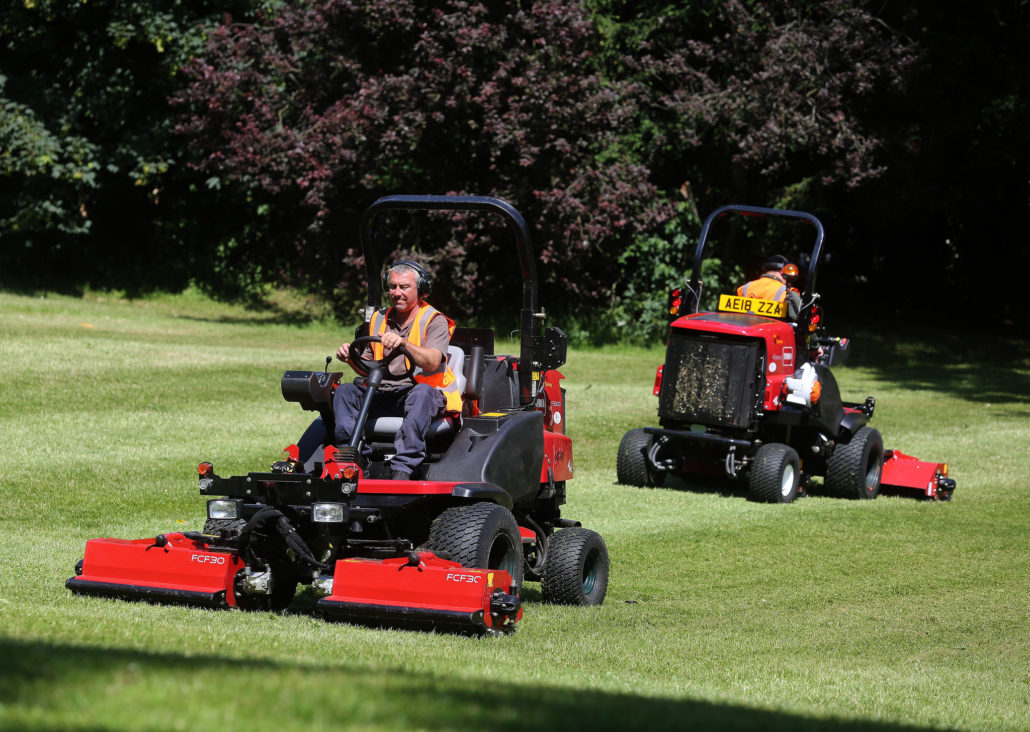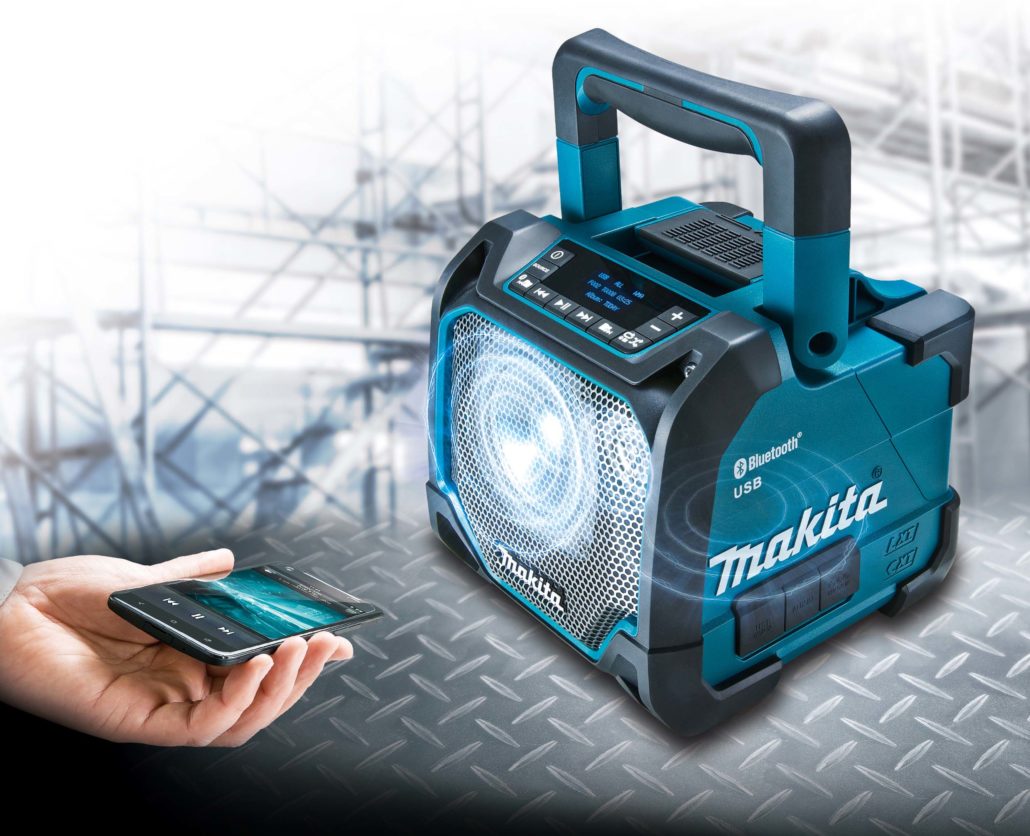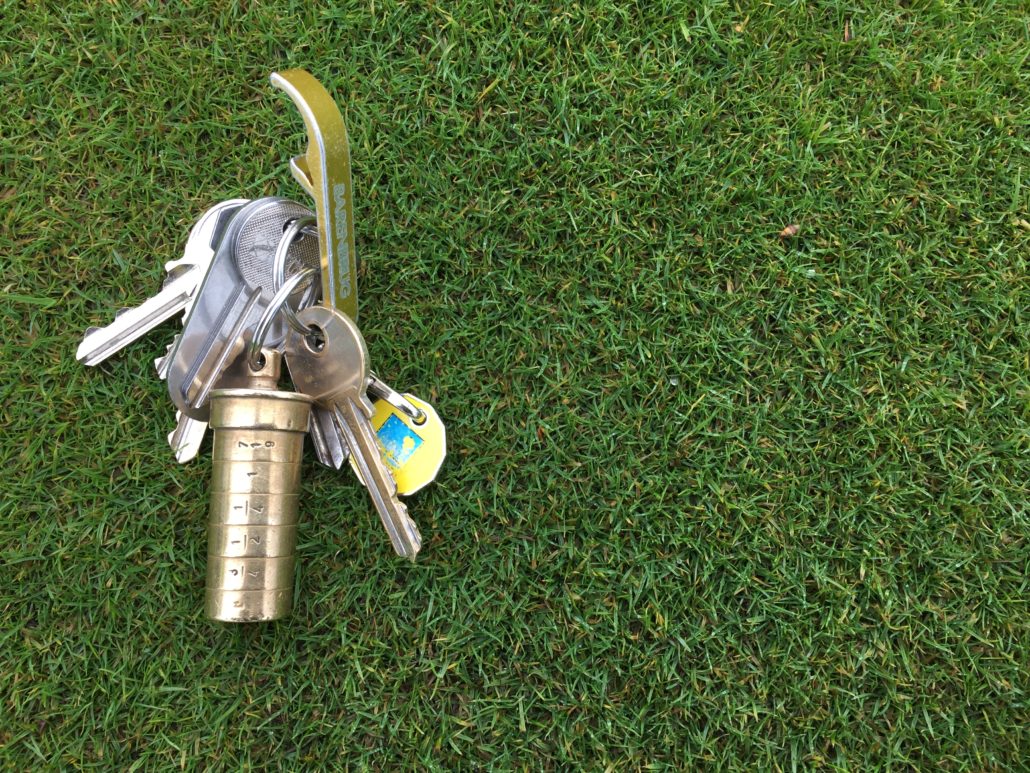Work Of A Non-League Groundsman: In the no-frills, grass roots world of non-league football, it’s possible the most important man on the pitch is the groundsman.
Sitting on a plastic chair, in muddy boots and paint stained jacket, David Page is every bit the non-league groundsman I was hoping to meet.

“The day begins with a cup of tea,” he says, welcoming me into the cosy former shipping container, which serves as his office and general tea room. “You’ve turned up at the perfect time. Days like this provide a glimpse into real life non-league football.”
My journey to Crown Meadow, the home of Vanarama National League North side Lowestoft Town was old school. No out of town, bland stadium here, but a walk along Seago Street, past rows of terrace housing, eventually arriving at the metal gates. It feels like a proper football ground, steeped in history, rooted in the local community. I vividly remember watching games here, on dark winter nights with friends some twenty-plus years ago. Experiences like those stay forever in the mind.
The club has seen mixed fortunes – fighting bankruptcy, relying on supporters’ donations, then an FA Vase final at Wembley, successive promotions, play-off finals and now reaching the heights of National League North non-league football. By any standards, it’s been one heck of a journey for the Trawlerboys.
Sipping our tea, we stare out at the bleak conditions. Rain pummels the pitch with such force that I doubt today’s important match against one of the league’s biggest teams, Stockport County, will go ahead.
“It’ll be on,” says David. He should know. He’s looked after the pitch for 19 years. He takes off his deep blue baseball cap, which proudly bears the club logo. The previous night was a sleepless one, he says, worrying about the pitch and checking for regular weather updates.
“I never switch off. I can’t – I keep thinking about my pitch and what condition it will be in.” David is a Lowestoft man. He used to work in the fishing industry, spending days and nights out on the North Sea on one of the many trawlers that frequented this stretch of coast. But nineteen years ago, he was approached by the Lowestoft Town chairman to become their groundsman. He joined the ground-keeping course at Ipswich Town, learning from the best in the business, Alan Fergusson, now head groundsman at St Georges Park, home of the England international team.
Sitting in the press box, overlooking the ground, I chat to David. He is focused on the pitch, watching rain sweep across, soaking the already soaked turf. It’s like watching a chess player planning his next move.
“What you see is what you get here,” he says. “We don’t have the luxury of training pitches or elaborate facilities, this pitch sees a lot of action. Four of our sides play and train on the surface.” The first team, reserves, youth and women’s sides all regularly use the surface, making the groundsman’s job all the more difficult. It’s in remarkable condition, considering.
Despite the advancement of technology and pitch care, the job of a non-league groundsman has changed little, and the task of getting the pitch ready for match day is much the same as it always was, although, as David is keen to point out, there is a vast improvement in equipment.
“When I first came up here, the groundsman at the time took me to the shed, handed me the rechargeable drill and pointed to the lawnmower – that was it.” The Trawlerboys’ shed is now home to a host of ground improving aids – large and small rollers, slitter, mowers, rakes and no end of tools to help keep the surface in top condition. A combination of good equipment and superb knowledge means the club did not postpone one game last season, impressive for any club, but especially for a non-league side.
It hasn’t always been like that. David recalls one match day when he arrived to find three-quarters of the pitch under water.
“I could have cried,” he says. We head towards the home team changing room. George the kit man is already laying out the players’ match day kit. Rows of bright blue shirts hang from the hooks, while freshly laundered towels and other essentials are carefully placed at the ready for each player.
David checks the facilities, making sure everything is working. The job of a groundsman at this level is one of caretaker too. The club also has several volunteers who help with painting and maintenance.
On a match day David typically arrives around 6.30am and is normally the last to leave in the evening. He returns early Sunday morning to clean the stands and changing rooms, and see to the pitch if there is a women’s game on. “It’s a good job my wife works in the turnstiles, otherwise we would never see each other,” he says.
As the rain eases off, we head out onto the pitch. Holding his trusty groundsman’s fork, David begins slowly lifting the turf, allowing some of the standing water to disperse. The pitch feels spongy and I imagine it won’t take much for the surface to cut up, but David remains hopeful.
“We have the referee coming around 10am for a pitch inspection – I think we’ll be OK”. Heading back to the office I warm up by the heater while David, the referee and club secretary stroll across the soggy pitch.
“Is it on, mate?” asks a Stockport County fan, one of many who have stayed in town overnight after a six-hour car journey. The game is given the go ahead, preparations for match day continue, and as the rain subsides, the line marker is brought pitch side. It’s a job that can take a good hour and means walking miles over the course of a week. I head for the exit.
The next time I see David is at half time in the match. He’s out there, patting and lifting the turf, nurturing the surface. A last minute goal sees the Trawlerboys grab a score draw. The fans pour out of the exit, smiles on their faces. David is pitch side, staring out onto his beloved turf, pondering his next move.
Click here to read the original article
For the latest industry news visit turfmatters.co.uk/news
Get all of the big headlines, pictures, opinions and videos on stories that matter to you.
Follow us on Twitter for fun, fresh and engaging content.
You can also find us on Facebook for more of your must-see news, features, videos and pictures from Turf Matters.



















